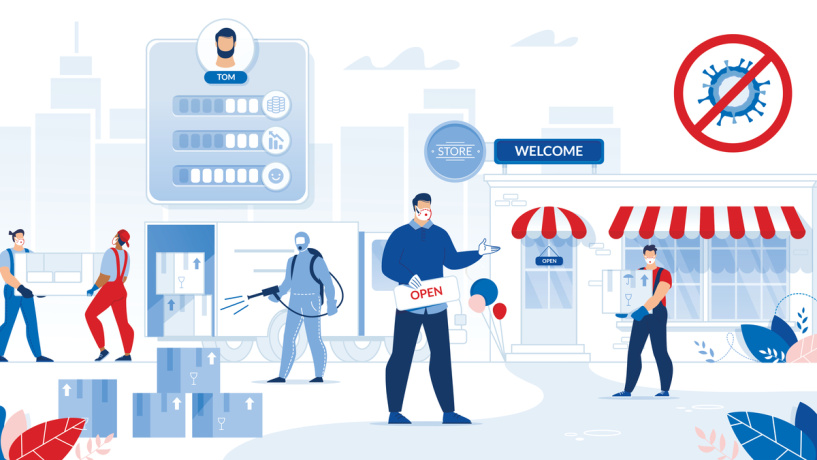Pandemic Spurs Even More Online Shopping, Forcing Retailer Fixes, Flexibility, and Innovation

In a most unpredictable, unprecedented year, how is holiday shopping shaping up? It’s been of particular interest to industry experts and, of course, the retailers themselves. Retail’s high season came just as COVID-19 cases surged again, several months into the pandemic.
Among the questions being explored: Are trends toward online shopping accelerating? What about the call to “shop local,” given the heightened concern for the survival of mom-and-pop shops? And just what the heck does it mean when an online shopping session gets “hijacked”?
Jun Li, an associate professor of technology and operations at U-M’s Ross School of Business, provides some answers.
With the coronavirus resurging, do we see the pre-pandemic trend toward online shopping continuing to accelerate?
Li: Absolutely. There are several factors — one is the resurgence of the virus, the second is consumers getting used to shopping online. More importantly, retailers have greatly enhanced their digital capabilities since the start of the pandemic. Many have anticipated and planned for a surge in online traffic during the holiday season.
Do you see any data from the Black Friday period that’s noteworthy, or confirms or contradicts trends?
Li: While in-store traffic decreased, the Black Friday in 2020 has set a record for online sales — $9 billion, a 22% increase over 2019, according to Adobe Analytics. In particular, much of it comes from mobile shopping, as consumers stay at home and shop via smartphones alongside their household members. Overall, retailers likely rely more on the holiday season this year, which is why we see deeper discounts and longer sales periods. Traditionally, 19% of goods sold in the U.S. are sold during the holiday season. The number will likely be higher this year. Increased sensitivity to price and earlier shutdowns all make this holiday season a more important battleground for retailers.
Conversely (or additionally), is this the year we really do try to “buy local” and help our own communities — as many try to do with their favorite local restaurants?
Li: While some of us are doing this, it is not significant enough to reverse the trend. The well-advertised, deeply discounted online deals will keep attracting customers. More holiday shopping will take place online in the month to come, while people restrain from physical activities.
So many months into the pandemic, are you seeing any industry innovations that otherwise might not have happened?
Li: Retailers’ digital capabilities have certainly greatly expanded. This means the whole retail supply chain front to back — faster order processing, picking and packing in warehouses, ensuring sufficient stock at the right time in the right location, buying online and returning in store, as well as curbside pickups. Even so, the significant surge of online shopping during this year’s Black Friday still caught some retailers underprepared. More retailers experienced stocking out, website slowdowns or crashes during this Black Friday compared to past ones.
For example, some consumers may have experienced difficulty just opening a web page due to higher online traffic — they may have received an error message, or an apology message that the retailer is working on the site, or being placed in a “virtual” queue to enter the store. The virtual waiting room is used to handle visitor overload on eCommerce sites, but the next question — how to make the virtual wait worthwhile — is worth figuring out. Or else, be prepared for losing your customers.
During the holiday season, more shopping sessions are at risk of being hijacked, typically by unauthorized users/malware/ad injections. They disrupt consumers’ shopping journey, pose security risks and erode retailers’ revenue.
All this means that retailers will just have to constantly escalate their digital capabilities and innovate faster than ever, even in years to come.







